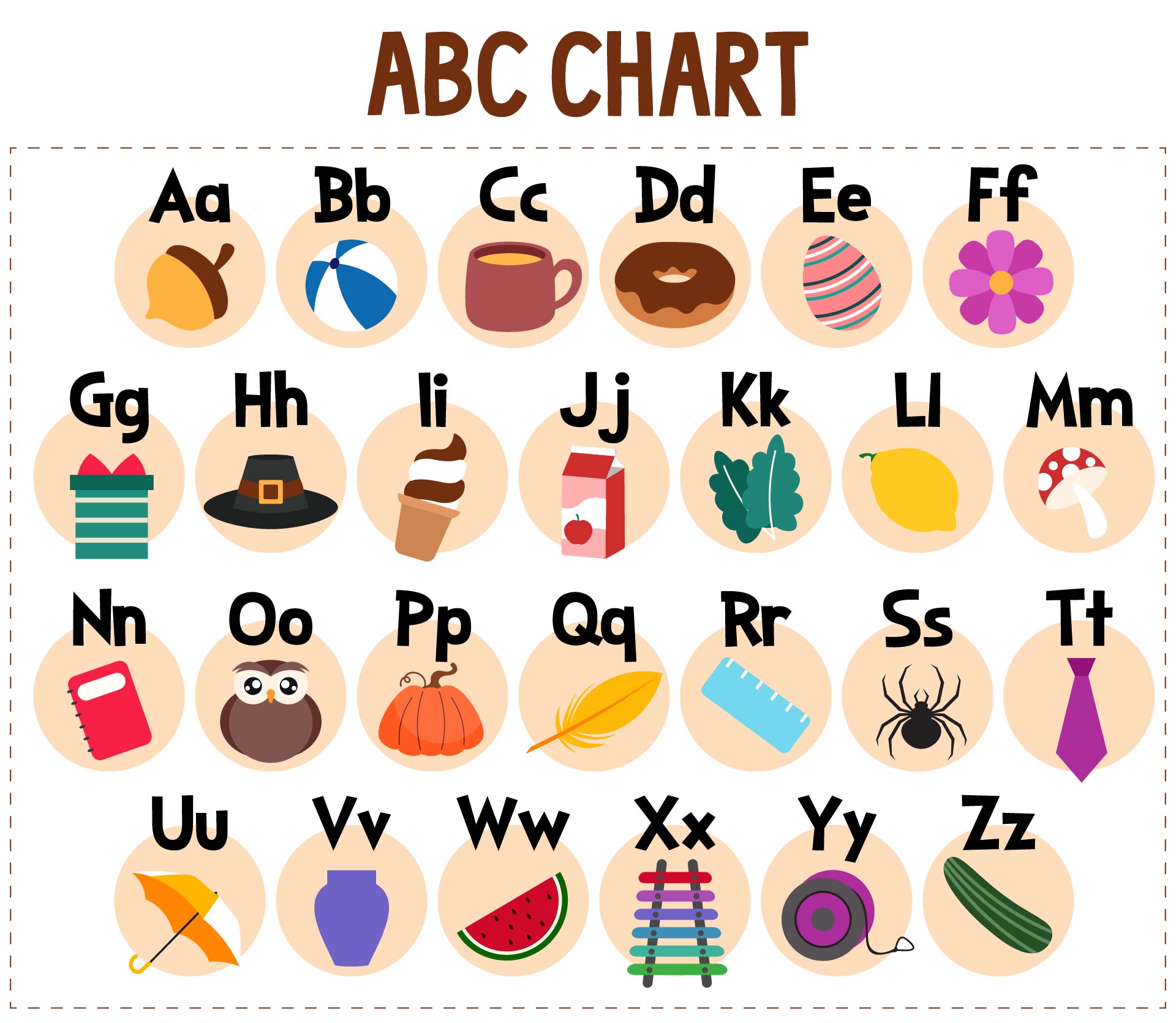
Social Security serves as a vital financial bedrock for millions of Americans, representing a promise kept across generations. For many, these benefits are more than just supplemental income; they are the primary source of financial security in their golden years. With a 2.8 percent cost-of-living adjustment (COLA) announced for 2026, which translates to an average increase of about $56 per month for retirees, it’s clear that these adjustments are crucial for helping benefits keep pace with economic realities.
However, simply relying on automatic COLAs might not be enough to fully address the ongoing struggle with higher prices, especially considering other rising costs like Medicare Part B premiums. The financial landscape can be complex, and ensuring your Social Security benefits go as far as possible requires proactive planning and smart decisions. This guide is designed to empower you with concrete, actionable advice, helping you understand how to maximize your Social Security benefit and improve your financial outlook, not just for 2026, but for the long term.
We’ll dive into practical strategies, offering clear, concise steps you can take to make the most of your Social Security. From understanding claiming ages to leveraging online tools and optimizing your earnings, these tips are framed around solving common financial challenges and enhancing your daily routines. Let’s explore these smart ways to increase your Social Security benefit amount, ensuring you build a more secure and comfortable retirement.

1. **Delay Claiming Benefits Until Age 70**One of the most impactful strategies available to future retirees is the decision to delay claiming Social Security benefits. The Social Security Administration explicitly states, “One way to ensure a larger monthly Social Security benefit is to delay claiming your benefits until age 70.” This isn’t just a minor tweak; it’s a powerful lever that can significantly increase your monthly payment for the rest of your life.
For every month you delay claiming after your birthday month, you receive an extra two-thirds of one percent increase. This accumulation can lead to a substantial boost, reaching up to 8% for each full year you wait until age 70. This means that if you hold off on collecting benefits until you reach 70, your monthly benefit will be a remarkable 28% higher compared to if you had started at your full retirement age (FRA).
This strategy provides a guaranteed return that is difficult to match in other investment vehicles, especially for those who are in good health and expect a long retirement. By consciously choosing to defer your benefits, you are effectively “buying” yourself a larger, inflation-adjusted income stream for your later years. It’s a decision that can transform your financial security, offering peace of mind and greater spending power when you need it most.
Read more about: New Road Ahead: Unpacking 14 Crucial Driving Law Changes in Key US States for the Coming Year

2. **Understand the Impact of Early Claiming**While delaying benefits until age 70 can significantly increase your monthly check, claiming them early has the opposite effect. It’s crucial to understand that “collecting benefits before your FRA can lead to a permanent decrease in your benefits.” This reduction is not temporary; it’s a permanent adjustment that will affect every single payment you receive throughout your retirement.
The context provides a clear example of this impact: “If you were born in 1960 or later, taking benefits at 62 would reduce your check by 30% and spousal benefits would be reduced by 35%.” This substantial reduction highlights the long-term financial implications of an early claim. For many, this 30% cut could mean a significant difference in their ability to cover essential expenses like housing, food, and healthcare.
Furthermore, it’s important to note the impact on spousal benefits. “The maximum benefit for a spouse is only 50% of the benefit the worker would receive at FRA. The percentage reduction for the spouse would be applied after the automatic 50% reduction.” This means that an early claim not only reduces your own income but can also severely diminish the financial support available to your spouse, potentially affecting the overall financial well-being of your household. Careful consideration of these reductions is paramount before making a claiming decision.
Read more about: Beyond Fatigue: Crucial Thyroid Disorder Symptoms You Should Never Overlook, Including Early Signs That Begin in Your Hair and Skin

3. **Utilize a ‘Social Security Bridge’ with Retirement Savings**For many, the idea of delaying Social Security benefits until age 70 sounds appealing due to the higher payouts, but the practical challenge is how to cover living expenses during those deferral years. This is where a “Social Security bridge” strategy comes into play, utilizing your existing retirement savings. The context suggests, “You can use your retirement savings to postpone receiving Social Security and create a ‘Social Security bridge’ to help reduce early-claiming penalties and collect a higher monthly income.”
This strategy involves drawing down funds from other retirement accounts, such as IRAs or 401(k)s, during the period you choose to delay Social Security. Instead of claiming Social Security early and accepting a reduced monthly payment, you use your other savings as a temporary income source. This allows your Social Security benefit to continue growing, ultimately resulting in a much larger monthly check when you do decide to claim.
“Whether you have an IRA or 401(k), both offer strategies to help you delay claiming your benefits until your FRA, if not later.” By strategically managing these assets, you can bridge the income gap, avoid those steep early-claiming penalties, and position yourself to collect a significantly higher monthly income from Social Security for the rest of your life. It’s a powerful tactic for maximizing your overall retirement income potential.
Read more about: From Paparazzi to Privacy: How Celebrities and Influencers Are Masterfully Reclaiming Their Lives Offstage in the Digital Age

4. **Strategize Around the Social Security Earnings Test**For those who plan to continue working after claiming Social Security benefits, especially before reaching their full retirement age (FRA), understanding the Social Security earnings test is absolutely critical. This test can impact your benefit amount if your earned income exceeds certain thresholds. The Social Security Administration warns, “Earned income can cost you if you continue to work after claiming Social Security benefits early.”
Specifically, “The SSA temporarily withholds $1 of your benefits for every $2 earned over $24,480 or $2,040 per month for 2026.” This means that if you earn more than this annual limit, a portion of your Social Security benefit will be withheld. It’s important to remember that this withholding is temporary; the SSA recalculates your benefit at your FRA to account for any withheld amounts, potentially leading to a slightly higher payment later. However, in the short term, it directly reduces your monthly check.
The rules become more generous in the year you reach your full retirement age. For that specific year, “the worker forfeits $1 in benefits for every $3 in 2026 earnings above $65,160 or $5,430 per month.” This higher threshold provides more flexibility for those approaching their FRA. Understanding these limits and planning your work income accordingly can help you minimize benefit reductions and maximize your combined income from both work and Social Security.
Read more about: Beyond the Plate: 7 Genius Ways Celebrity Chefs Keep Their Secret Recipes Under Wraps

5. **Maximize Your Social Security Taxable Earnings**Social Security benefits are calculated based on your lifetime earnings, specifically the highest 35 years of your indexed earnings. A key component of this calculation involves the “taxable maximum,” which is the maximum amount of earnings subject to Social Security tax each year. The context highlights this: “Social Security caps the amount of income you pay taxes on and get credit for when benefits are calculated.”
For 2026, “The new Social Security tax limit is $184,500 in 2026, up $8,400 from $176,100 in 2025.” This means that earnings above this limit are not subject to Social Security taxes, nor are they included in the calculation of your future benefits. For high earners, maximizing your earnings up to this limit each year can have a significant impact on your eventual benefit amount.
While you might not have direct control over your income, understanding this cap is vital for long-term financial planning. Consistently earning at or above the taxable maximum for your working years ensures you receive the maximum possible credit towards your Social Security benefit. Since “the tax limit is indexed to inflation, so you can anticipate it will rise again in 2027,” staying informed about these annual adjustments is crucial for optimizing your contributions and, consequently, your future benefits.
Read more about: Navigating the New Tax Landscape: 14 Key Changes Freelancers Must Know for 2025

6. **Earn Sufficient Social Security Credits**Before you can even begin to think about the size of your Social Security benefit, you must first qualify for them. This qualification is based on earning “Social Security credits,” which are accumulated through your work history. The fundamental rule is clear: “You must earn a minimum of 40 Social Security credits to qualify for retirement benefits.” Without these 40 credits, the Social Security Administration “cannot pay you benefits.”
These credits are earned throughout your working life as you pay Social Security taxes on your earnings. The system is designed so that most people who work consistently for at least 10 years will accumulate the necessary 40 credits. However, it’s not simply about time; it’s about earning a certain amount of income within each year.
The SSA emphasizes that it “also uses the number of credits you’ve earned to determine your eligibility for retirement or disability benefits, Medicare, and your family’s eligibility for survivor benefits.” This underscores the broad importance of accumulating these credits, as they unlock a range of protections and benefits for you and your family beyond just your own retirement income. Ensuring you meet this basic eligibility requirement is the first and most crucial step in securing your Social Security future.
Read more about: Don’t Trip at the Starting Line: The Worst Social Security Mistakes People Make When Filing at Age 62

7. **Understand Annual Credit Requirements**While accumulating 40 credits over your working life is the overarching goal, it’s equally important to understand how these credits are earned on an annual basis. The Social Security Administration allows individuals to “earn up to four credits per year.” This maximum means that even if you earn a very high income, you cannot earn more than four credits in any single calendar year.
The amount of wages or self-employment income required to earn a single credit changes each year due to inflation. For 2026, “To earn one credit in 2026, you must have wages and/or self-employment income of $1,890, and you must earn $7,560 to get four full credits.” This provides a clear target for workers to ensure they are earning the maximum possible credits each year.
The context notes that this amount increased from the previous year: “In 2025, you only needed to earn $1,810 to earn a credit, $80 less than what you needed to earn in 2026.” This annual adjustment means it’s essential to stay informed about the current year’s requirements. By ensuring you meet the income threshold for four credits annually, you not only expedite your path to the 40-credit minimum but also maximize your overall lifetime earnings record, which directly contributes to a higher calculated benefit amount.
Read more about: Beyond the Fine Print: 14 Hidden Bank Fees Draining Your Wallet – A Consumer Reports Deep Dive for 2025

8. **Understand the Power of the Cost-of-Living Adjustment (COLA)**The annual Cost-of-Living Adjustment, or COLA, is a cornerstone of Social Security, designed to ensure your benefits maintain their purchasing power against inflation. For 2026, the Social Security Administration (SSA) announced a 2.8 percent increase, which translates to an average boost of about $56 per month for retirees. This adjustment is crucial for the nearly 71 million Social Security beneficiaries, helping their payments keep pace with economic realities.
While a 2.8% COLA might not fully address every rising cost, particularly for those grappling with higher prices like Medicare Part B premiums, it’s a vital safeguard for your financial security. For the approximately 40% of older Americans who rely on Social Security as their primary income, this annual increase is more than just a number; it’s a commitment to providing a stable foundation. It ensures your fixed income doesn’t erode significantly over time.
Historically, COLAs have varied, averaging about 3.1% over the last decade and 2.6% over the past 20 years, with the 2025 COLA being 2.5%. Understanding this mechanism empowers you to factor this automatic adjustment into your broader financial planning. You can estimate your upcoming benefit increase by multiplying your current monthly payment by 0.028, giving you an immediate, actionable insight into your adjusted income.

**9. Navigate Medicare Part B Premiums and Their Impact**
While the COLA offers an increase to your gross Social Security benefit, a significant portion of that boost can be absorbed by Medicare Part B premiums. These premiums, which cover doctor visits and outpatient care, are typically deducted directly from your Social Security checks. Consequently, your net monthly payment will be lower than the gross amount announced after the COLA, making it critical to anticipate this impact.
Projections from Medicare trustees for 2026 indicate a potential 11.6% rise in the standard monthly Part B premium, increasing it by $21.50 per month, from $185 to $206.50. For the average beneficiary, nearly half of their $56 COLA increase could be consumed by this single deduction. This stark reality underscores the importance of accounting for healthcare costs when budgeting your retirement income.
Additionally, be aware of Income-Related Monthly Adjustment Amounts (IRMAAs). If your income exceeds certain thresholds, you may be required to pay these additional monthly costs on top of the standard Part B premium. These adjustments further reduce the net value of your Social Security benefit, highlighting the need for higher earners to plan for increased Medicare expenses.
By understanding the intricate relationship between your COLA and Medicare premiums, you can create a more realistic and accurate retirement budget. Don’t let unexpected deductions diminish your financial comfort; proactive planning for these costs ensures you’re truly making your Social Security benefits go as far as possible.

**10. Utilize Your “my Social Security” Online Account**
In our increasingly digital world, leveraging online tools is a smart and efficient way to manage your Social Security benefits and stay informed. The “my Social Security” online account provides a secure, easy-to-use, and swift portal for accessing crucial information and services. It’s a powerful digital hub that can significantly simplify your interactions with the SSA and optimize your benefit management.
One of the most immediate advantages of a “my Social Security” account is the ability to view your COLA notices online. By opting out of paper notices by November 19, 2025, you can receive your personalized COLA notification digitally, often earlier than the mailed versions. You can also set up text or email alerts, ensuring you’re instantly notified when new messages, such as your COLA notice, become available in your account.
Beyond just COLA notices, your online account offers a comprehensive suite of features designed to empower you. You can easily request a replacement Social Security card, track the status of a claim you’ve filed, view your current benefits information, and access your SSA-1099 form for tax purposes. These services are invaluable for streamlined record-keeping and managing your SSA interactions without the typical delays associated with postal mail or telephone queues.
To unlock these digital conveniences, simply visit www.ssa.gov/myaccount to create or log in to your personal account. Embracing this digital approach not only grants quicker access to vital information but also provides a more secure method for handling your sensitive benefit data. It’s a straightforward, actionable step that puts control directly in your hands, embodying the Lifehacker ethos of optimizing daily routines.

**11. Strategize Federal Income Tax Withholding on Benefits**
Understanding the taxability of your Social Security benefits is a crucial element of managing your overall retirement income. Many beneficiaries are surprised to learn that their Social Security payments are not always tax-free. Depending on your total “combined income,” a portion of your benefits could become subject to federal income tax, impacting your net financial resources.
For individual tax filers, Social Security benefits become taxable if your combined income exceeds $25,000. For married couples filing jointly, this threshold increases to $32,000. Your “combined income” is determined by adding 50% of your Social Security benefits to all your other income sources, including tax-exempt interest. This means that even if you have other moderate income streams, you could find a portion of your benefits taxed.
To proactively manage this potential tax liability and avoid a large bill at year-end, the SSA offers beneficiaries the option to have federal income tax withheld directly from their monthly benefit checks. You can choose from four fixed percentage rates: 7%, 10%, 12%, or 22% of your payment. This strategic withholding can help distribute your tax burden throughout the year, preventing unexpected financial shocks.
Carefully evaluating your income sources and making an informed decision about tax withholding is a smart move for optimizing your Social Security benefits. By aligning your tax strategy with your overall financial plan, you can minimize unforeseen tax obligations, ensuring more of your hard-earned benefits contribute directly to your living expenses and financial comfort.

**12. Demystify the COLA Calculation Method**
The annual Cost-of-Living Adjustment isn’t an arbitrary figure; it’s a precisely calculated number rooted in specific economic data. Grasping how the COLA is determined offers invaluable insight into why your Social Security benefits adjust year to year, empowering you with a more complete and informed understanding of your retirement income.
The Social Security Act precisely defines how the COLA is calculated, tying it to the increase in the Consumer Price Index for Urban Wage Earners and Clerical Workers (CPI-W). This index, compiled by the Department of Labor’s Bureau of Labor Statistics, specifically measures price changes for a fixed basket of goods and services typically purchased by working people. The COLA represents the percentage increase in the CPI-W from the third quarter (July, August, September) of the previous year to the third quarter of the current year.
For example, the 2.8% COLA for 2026 was derived by comparing the average CPI-W figures for July, August, and September of 2025 against the average for the same months in 2024. This method ensures the COLA directly reflects recent inflation trends, providing a vital adjustment to maintain your purchasing power. This automatic adjustment system began in 1975, a direct result of the 1972 Social Security Amendments, which sought to combat rapid inflation that was eroding fixed incomes.
While some proposals advocate for using the CPI-E (Consumer Price Index for Americans aged 62 or older), arguing it better reflects older adults’ unique costs like medical expenses, the CPI-W remains the official benchmark. This comprehensive approach means the COLA impacts all beneficiaries, including those receiving disability and survivor benefits, ensuring a consistent and transparent adjustment method across the board.

**13. Know Your Social Security Payment Schedule**
For effective budgeting and seamless financial management, knowing precisely when to expect your Social Security benefits each month is fundamental. The Social Security Administration adheres to a clear, predictable payment schedule, primarily based on your birthdate. This consistency allows you to plan your monthly expenses, bill payments, and withdrawals with precision, eliminating any financial guesswork.
Payments reflecting the 2026 COLA will begin in January for nearly 71 million Social Security beneficiaries. Your specific payment date is determined by your day of birth. If you were born between the 1st and 10th day of the month, your benefit payment is scheduled for the second Wednesday of the month. For January 2026, this would be January 14.
For those with birthdays falling between the 11th and 20th day of the month, your checks will be issued on the third Wednesday of the month, which is January 21, 2026. Lastly, if your birthday occurs between the 21st and 31st day of the month, your payment will arrive on the fourth Wednesday, scheduled for January 28, 2026. This staggered system facilitates an orderly distribution of benefits throughout the month.
It’s also helpful to note that Supplemental Security Income (SSI) payments typically go out on the 1st of each month, unless that day falls on a weekend or holiday, in which case they are paid on the preceding business day. For beneficiaries who began receiving Social Security prior to May 1997, or those receiving both Social Security and SSI, Social Security is generally paid on the 3rd, and SSI on the 1st. Understanding these distinct schedules ensures a continuous flow of your retirement income.

**14. Explore Broader Financial and Lifestyle Adjustments**
While directly increasing your Social Security benefits is vital, truly making them “go further” often requires a broader perspective, encompassing financial and lifestyle adjustments beyond the monthly check. The 2.8% COLA for 2026, though helpful, may not entirely alleviate the burden of persistent high prices, especially considering other rising costs like Medicare Part B premiums and retirement-specific expenses. This calls for a holistic approach to your retirement finances.
One impactful strategy is to critically assess your cost of living. Living expenses and inflation rates vary considerably across different regions of the country. For example, a single older adult homeowner in New York City might need an annual income of $30,936 to cover basic needs, while the same individual in Birmingham, Alabama, could manage on $21,576. Relocating to a lower cost-of-living area can dramatically enhance the purchasing power of your Social Security benefits without increasing the dollar amount.
Another actionable step involves scrutinizing and adjusting your spending habits. For higher-income retirees, this might mean cutting back on discretionary expenses such as entertainment or travel. However, even for those with more limited incomes, a thorough review of all expenditures can identify areas for optimization. While the context acknowledges that “lower income people don’t have much budget that they can cut,” any mindful saving contributes to overall financial resilience.
Finally, consider the option of part-time work, even if you are already receiving Social Security benefits. As a beneficiary, you are permitted to work, and this can significantly improve your financial picture. While an earnings test may apply if you haven’t reached full retirement age, potentially leading to a temporary withholding of benefits, the additional income can still enhance your overall financial security. This proactive measure provides extra cash flow and can boost your quality of life.

**15. Stay Informed and Proactive with SSA Communications**
Being a smart Social Security beneficiary extends beyond understanding the mechanics of your benefits; it requires actively engaging with the Social Security Administration and staying continually informed about changes and updates. The SSA regularly disseminates crucial information, and knowing how to access and interpret these communications is a key element in optimizing your benefits for the long term. This proactive approach is indispensable for maintaining financial well-being.
The SSA typically notifies beneficiaries about their new benefit amounts by mail, with notices starting to arrive in early December each year. However, as previously discussed, signing up for a “my Social Security” online account offers faster and more secure access to these personalized COLA notices. Beyond your individual notice, the SSA consistently releases press releases, comprehensive fact sheets (such as the COLA 2026 Fact Sheet), and general updates, which are readily available on their official website (www.ssa.gov) and their X account (@SocialSecurity).
Staying abreast of these official announcements ensures you receive the most accurate and timely information regarding benefit adjustments, policy changes, and important deadlines. For instance, detailed information about Medicare changes for 2026 will be accessible at www.medicare.gov, and your specific 2026 Medicare premium amount will be visible via your “my Social Security Message Center” in late November. Knowing where and how to find this information is a powerful, actionable step towards greater financial empowerment.
Furthermore, external resources like the National Council on Aging offer online benefits checkup tools, which can help you identify additional assistance programs for healthcare, food, housing, and utilities. This highlights that staying informed encompasses not only SSA communications but also leveraging broader support systems. By consistently checking official channels and utilizing available resources, you equip yourself to make the best decisions for your Social Security benefits and your broader financial health, ensuring a more secure future.
Read more about: Beyond the Sticker Shock: The 12 Hidden Costs That Make Luxury Sedan Repairs So Expensive for Owners
Navigating the complexities of Social Security can feel daunting, but with these 15 smart strategies, you’re now equipped with a powerful toolkit to maximize and optimize your benefits. From strategically delaying your claim to leveraging online accounts and understanding the intricate COLA calculations, each step empowers you to take control of your financial future. Remember, Social Security is a cornerstone of retirement security, and by being proactive, informed, and strategic, you can ensure it truly delivers its full promise, providing a more comfortable and secure tomorrow.



